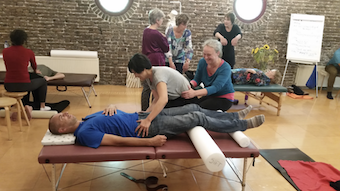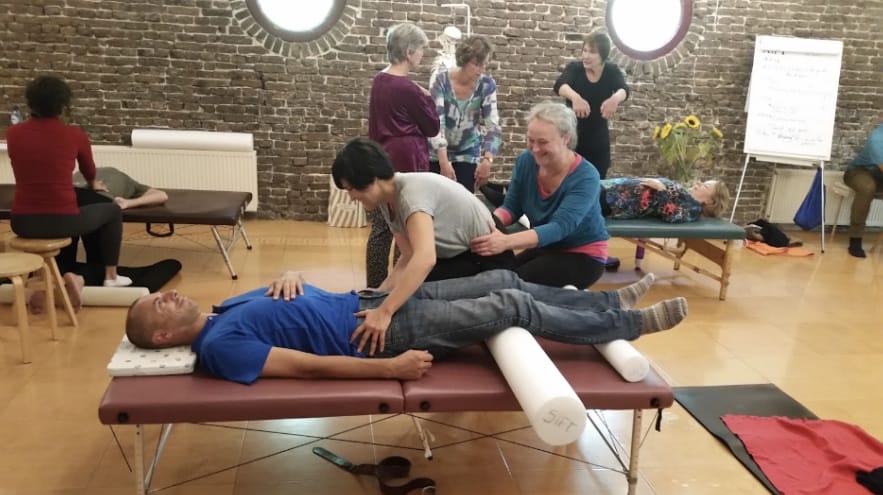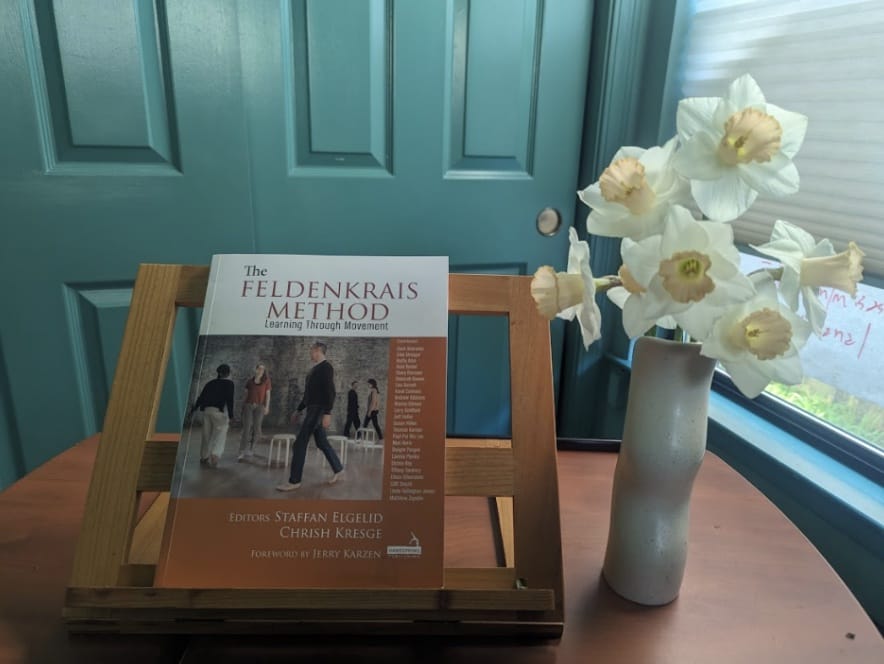
On becoming a Feldenkrais Teacher

Tell me and I forget.
Teach me and I remember.
Involve me and I learn.
— Benjamin Franklin
Over nearly three decades of training people to teach the method he pioneered, Moshe Feldenkrais tried different lengths, varying formats, and educational plans. Each one was a unique experiment.
Studying Feldenkrais’ approaches, my colleagues and I sought to integrate the best aspects of each into our teacher training programs. Over the years, we gradually created a curriculum that we honed and refined, incorporating the most effective features and reworking those that needed improvement. We were guided by feedback from the participants and our commitment to prepare trainees to successfully practice Moshe’s methodology upon graduation.
At the beginning of the program, we act as Moshe’s emissaries, presenting his history and approach, teaching the classic Awareness Through Movement lessons, and familiarizing the trainees with the fundamentals of observing themselves and others. The program’s first years follow the overarching development from infancy to adulthood; then, we investigate more complex attributes of dexterity, agility, and coordination. We focus on learning the basics incrementally, following the idea that nurturing deep understanding and mastering the most difficult skills takes time, meaning that we start with them from the beginning.
The upcoming PRO-Feldenkrais International Feldenkrais Teacher Training in the Netherlands builds on everything we learned and takes it to the next step. We stay true to the essential tenets, such as the primacy of experiential learning, and incorporate the innovations we developed, such as having a community project as a stepping stone to teaching public classes. We enhance the traditional first-person emphasis with what was previously lacking, such as anatomical and biomechanical education, explicit training in biomechanics and hands-on technique, and exploring in-depth models of neurophysical learning (NPL). To ensure a state-of-the-art program, we will include recent developments, such as the advent of online teaching and its advantages for supporting continued learning between training modules, into the program.
Because it’s difficult to imagine what it’s like to participate in training and even harder to enroll in the program without experiencing it, I’ll offer an in-person A day in the Feldenkrais training on Sunday, May 5th, 2024, in Southern Holland. If you are interested in becoming a Feldenkrais teacher and want to know whether this program is right for you, I invite you to join us.
If you have a Become a Teacher or a Become a Better Teacher account on Mind in Motion online, you can listen to the first week of the third Amsterdam training program by going to the Testing Test Drive in the Library section of the website. If you haven’t signed up for your free account yet, you can do so here.

Finally, to learn more about the history of Feldenkrais’ approach to teacher training, please consult the chapter I wrote on the subject in The Feldenkrais Method — Learning Through Movement.
I took the photos in today’s post. The second one features daffodils from my garden.
Your thoughts?
Please let us know your perspective! Add your comments, reactions, suggestions, ideas, etc., by first logging in to your Mind in Motion account and then clicking here.
Commenting is only available to the Mind in Motion Online community.
Join in by getting your free account, which gives you access to the e-book edition of Articulating Changes (Larry's now-classic Master's thesis), ATM® lessons, and more — all at no charge whatsoever.
To find out more and sign up, please click here.
Please share this blog post
 This work is licensed under a Creative Commons Attribution-ShareAlike 4.0 International License
This work is licensed under a Creative Commons Attribution-ShareAlike 4.0 International License
This blog may contain one or more affiliate links. When you click on a link and then make a purchase, Mind in Motion receives a payment. Please note that we only link to products we believe in and services that we support. You can learn more about how affiliate links work and why we use them here


Has someone died?
(Besides Moshe…)
Hello Benoit –
I’m sorry, but I’m not sure what you’re asking or why you’re asking it. Care to clarify?